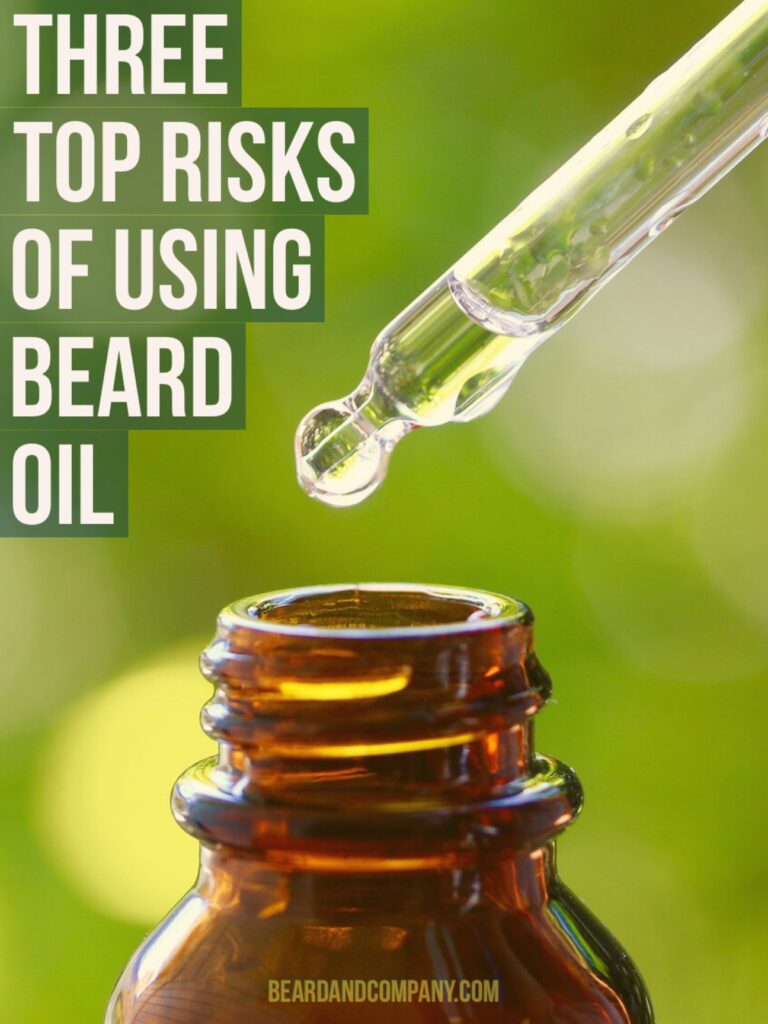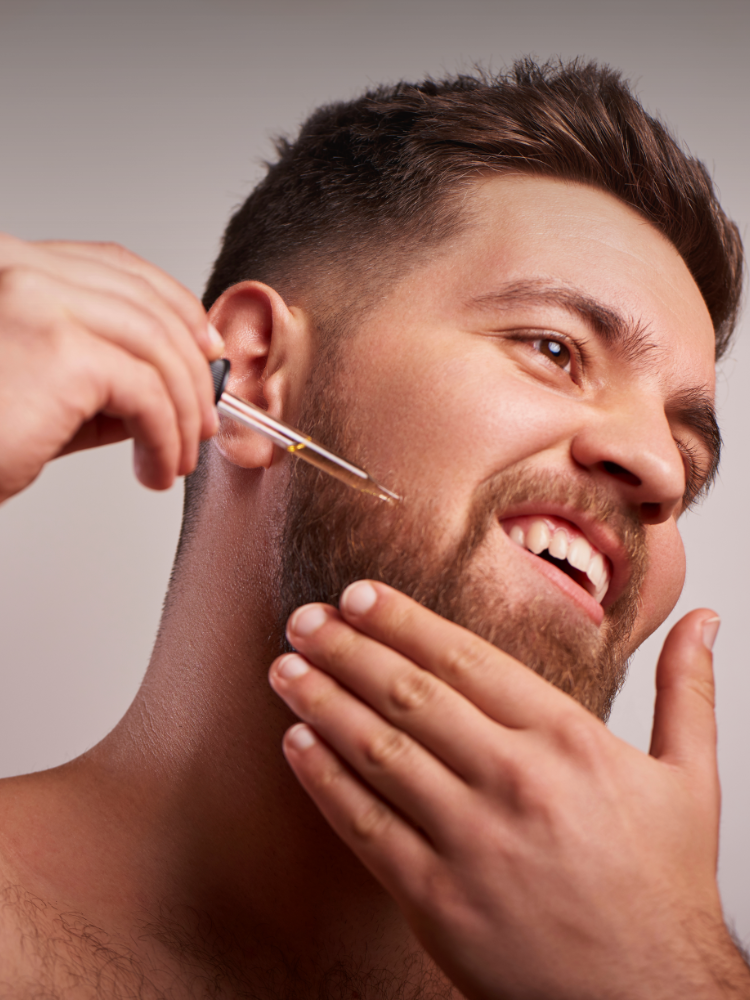Are you a proud owner of a beard or aspiring to grow one? In your quest for a fuller, thicker beard, you may have come across various beard growth oils promising miraculous results. While these oils may seem like a convenient solution, it’s important to be aware of their potential side effects. In this article, we will explore the possible downsides of using beard growth oil, shedding light on the lesser-known repercussions that might accompany your journey towards a luscious beard.

Overview of Beard Growth Oil
What is beard growth oil?
Beard growth oil is a grooming product specifically designed to promote the growth and maintenance of facial hair. It is typically formulated with a combination of natural and essential oils that work together to nourish the hair follicles, increase blood circulation to the skin, and provide essential nutrients to the hair.
How does beard growth oil work?
Beard growth oil works by providing vital nutrients and moisture to the hair follicles and the underlying skin. This nourishment helps to promote healthy hair growth, reduce breakage, and improve the overall appearance of the beard. The oils in the beard growth oil also help to moisturize the skin, prevent dryness and flakiness, and reduce itchiness and irritation.
Common ingredients in beard growth oil
Some of the common ingredients found in beard growth oils include:
-
Argan oil: Rich in essential fatty acids, antioxidants, and Vitamin E, argan oil helps to moisturize the beard and skin, promote hair growth, and improve the overall texture of the hair.
-
Jojoba oil: Known for its similarity to the natural oils produced by the skin, jojoba oil helps to regulate sebum production, moisturize the skin and hair, and prevent dryness and frizz.
-
Castor oil: Contains ricinoleic acid, which has anti-inflammatory and antimicrobial properties. Castor oil helps to strengthen the hair follicles, prevent breakage, and promote hair growth.
-
Tea tree oil: Known for its antibacterial and antifungal properties, tea tree oil helps to prevent bacterial or fungal infections on the skin, reduce inflammation, and promote a healthy beard.
These are just a few examples of the many ingredients you may find in beard growth oils. The specific combination of oils varies from product to product, but they all work together to achieve the desired beard growth and maintenance benefits.
Possible Side Effects of Beard Growth Oil
While beard growth oil can be beneficial for most individuals, it’s important to be aware of the potential side effects that may occur. Here are some common side effects to consider:
Skin Irritation
Some individuals may experience skin irritation after using beard growth oil. This can manifest as redness, itching, or a rash on the beard area. This irritation is usually mild and temporary, but if it persists or worsens, it’s important to discontinue use and consult a dermatologist.
Acne Breakouts
Given that beard growth oil is applied directly to the facial hair and skin, it can clog pores and lead to acne breakouts for some individuals. This is more likely to occur in individuals with oily or acne-prone skin. If you notice an increase in acne or breakouts after using beard growth oil, it may be necessary to reduce or discontinue use.
Allergic Reactions
Some individuals may be allergic to certain ingredients in beard growth oil. This can cause allergic reactions such as itching, swelling, or hives. If you have known allergies or are experiencing any signs of an allergic reaction, it’s important to stop using the product immediately and seek medical advice.
Inflammation or Redness
In some cases, beard growth oil can cause inflammation or redness on the skin. This may be due to certain ingredients or sensitivity to the oils used. If you experience persistent inflammation or redness, it’s advisable to discontinue use and consult with a dermatologist.
Dryness and Itching
While beard growth oil is meant to moisturize and nourish the skin, some individuals may experience dryness or increased itchiness after using it. This could be due to the specific formulation or individual skin type. If this occurs, it may be helpful to adjust the frequency of use or switch to a different product.
Greasy or Oily Skin
Beard growth oil is naturally rich in oils and can leave a greasy or oily residue on the skin. This can be bothersome for individuals with naturally oily skin or those who prefer a matte finish. To address this, it may be helpful to use the beard growth oil sparingly and blot any excess oil with a tissue.
Clogged Pores
As mentioned earlier, beard growth oil can potentially clog pores and lead to breakouts. To prevent this, it’s important to cleanse the beard area thoroughly and regularly. This will help to remove any excess oil, dirt, or debris that may accumulate and contribute to clogged pores.
Hair Damage or Discoloration
Using beard growth oil excessively or inappropriately can sometimes result in hair damage or discoloration. This may occur if the oil is not properly rinsed out or if the individual has specific sensitivities. To minimize the risk of hair damage or discoloration, it’s essential to follow the instructions provided by the manufacturer and use the product in moderation.
Unpleasant Odor
Certain oils and fragrances used in beard growth oils may have a strong or unpleasant odor. While this may be a personal preference, it’s worth noting that the scent of the oil can linger on the beard throughout the day. If you find the odor bothersome, it may be necessary to experiment with different oil blends or opt for unscented versions.
Lack of Scientific Evidence
It’s important to acknowledge that the effectiveness of beard growth oils is not universally supported by scientific evidence. While many individuals report positive results, there is limited research available to conclusively prove their efficacy. As with any grooming product, individual experiences may vary, and it’s always advisable to manage expectations accordingly.

Preventing and Managing Side Effects
While the potential side effects of beard growth oil can be concerning, there are several measures you can take to prevent and manage these issues. Here are a few tips to consider:
Perform a Patch Test
Before applying beard growth oil to your entire beard area, it is recommended to perform a patch test. Apply a small amount of the oil to a small area of skin and monitor for any adverse reactions such as redness, itching, or irritation. If no reactions occur within 24 hours, it is generally safe to apply the oil to the rest of your beard.
Use as Directed
Follow the instructions provided by the manufacturer when applying beard growth oil. Using excessive amounts or applying it more frequently than recommended can increase the likelihood of side effects. Adhering to the suggested usage will help maintain a proper balance and prevent any potential issues.
Choose High-Quality Products
Opt for reputable brands and high-quality beard growth oils. Look for products that contain natural and organic ingredients, as they are less likely to cause irritation or adverse reactions. Reading reviews and seeking recommendations can also help you find a product that suits your needs while minimizing the risk of side effects.
Follow Proper Hygiene
Maintaining proper hygiene is crucial to prevent side effects associated with beard growth oil. Ensure that your beard area is clean and free from dirt or debris before applying the oil. Regularly wash your beard and cleanse the skin underneath to prevent the buildup of oil, bacteria, or other irritants that can cause side effects.
Moisturize and Exfoliate
To counteract any dryness or flakiness caused by beard growth oil, incorporate regular moisturizing and exfoliating into your grooming routine. This will help keep the skin hydrated and remove any dead skin cells, ensuring a healthy and comfortable beard growth journey.
Avoid Overuse
Using excessive amounts of beard growth oil can overwhelm the hair and skin, potentially leading to side effects. It’s important to use the recommended amount and pace yourself to allow your beard and skin to adjust. Start with a small amount and gradually increase if necessary.
Monitor Your Skin
Pay close attention to how your skin and beard react to the beard growth oil. If you notice any persistent or worsening side effects, such as prolonged redness, severe itching, or increased acne breakouts, it is best to discontinue use. Consult with a dermatologist for further guidance and to rule out any underlying conditions.
Consult a Dermatologist
If you have a history of skin sensitivities, allergies, or recurring skin conditions, it may be beneficial to consult a dermatologist before incorporating beard growth oil into your grooming routine. A dermatologist can assess your specific needs and recommend suitable products or alternative solutions to prevent potential side effects.
Discontinue Use If Necessary
If you experience persistent or severe side effects that do not improve with time, it may be necessary to discontinue using beard growth oil altogether. Your skin’s health and comfort should be the top priority, and it’s important to find alternative grooming solutions that suit your individual needs without causing adverse reactions.
Alternative Solutions to Beard Growth Oil
If you are concerned about the potential side effects of beard growth oil or have experienced adverse reactions, there are alternative solutions to consider:
-
Natural Beard Care Products: Explore natural beard care products that are free from artificial fragrances, chemicals, and irritants. These products typically rely on natural ingredients and essential oils to promote hair growth and maintain beard health.
-
Dietary Changes and Supplements: A balanced diet rich in vitamins, minerals, and proteins can contribute to healthy hair growth. Consider incorporating foods such as lean meats, fish, eggs, fruits, and vegetables into your diet. Additionally, supplements like biotin or multivitamins designed for hair health may also be beneficial.
-
Lifestyle Modifications: Proper sleep, stress management, regular exercise, and adequate hydration can all contribute to overall hair health. Taking care of your body and overall well-being will reflect positively on your beard growth journey.
-
Consultation with a Specialist: If you are struggling with beard growth or have concerns about potential side effects, consider consulting with a dermatologist or a trichologist. They can provide personalized advice and recommend suitable solutions based on your specific needs and goals.

Conclusion
Beard growth oil can be a valuable tool for individuals looking to promote healthy beard growth and maintain a well-groomed appearance. While there are potential side effects to consider, adopting preventive measures and managing any adverse reactions can help make the experience more positive. Remember, everyone’s skin and beard are unique, so it may take some trial and error to find the right beard growth oil or alternative solution that works for you. Prioritize your skin’s health, be patient, and enjoy the journey to a luscious, well-nourished beard.

